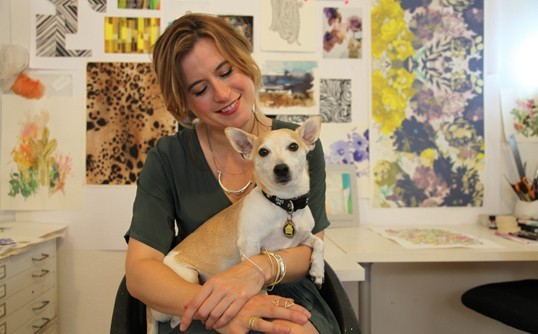

After eight years working in textile studios in London and New York, artist Helen Dealtry had put in her time — she was ready to design for more than the fashion market. She also knew she wanted to create a line she could pin her own name to.
Enter Woking Girl Designs, the creative textile design studio based in Brooklyn, NY that Helen founded in 2008. At Woking Girl, Helen splits her time between creating art (her Instagram account is a color shot of inspiration!) and managing the tasks with the stresses of being a small business owner. Her hard work has paid off in the form of compelling design collaborations with clients like Loeffler Randall, Bain, J. Crew, Anthropologie and more. And, of course, there’s the pleasure of seeing her artwork on everything from scarves and shoes to wallpaper.
“I’ve cried from sheer frustration many, many times over the years as I struggled to earn my stripes,” she says. “There are so many great artists out there, so I really believe that the best way to find your own unique spot is practice.”